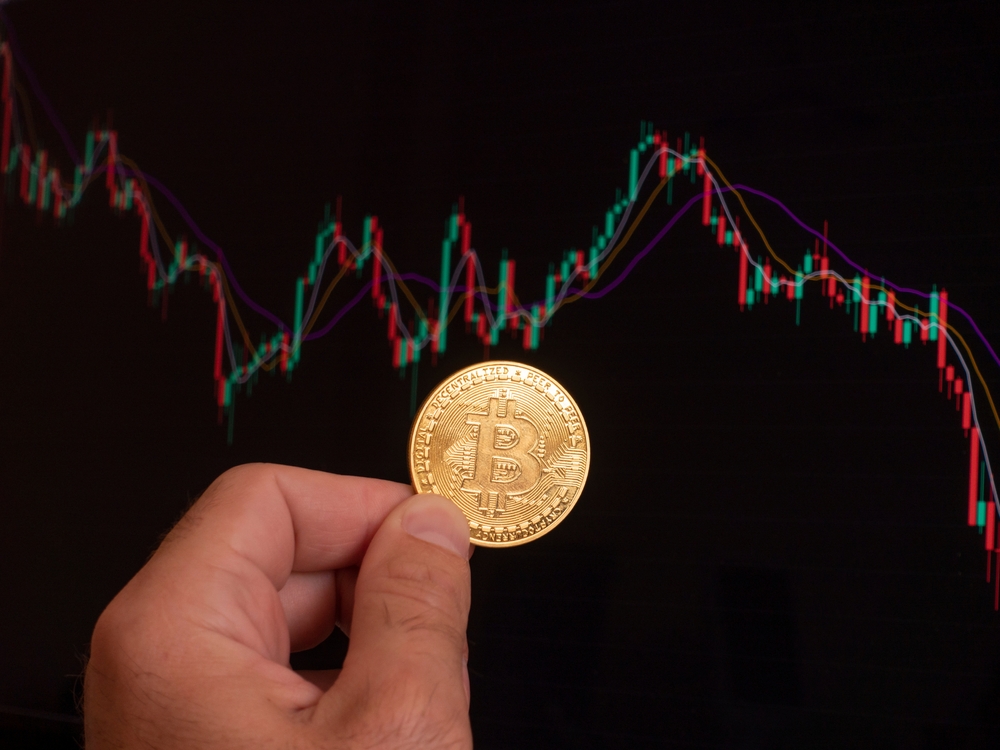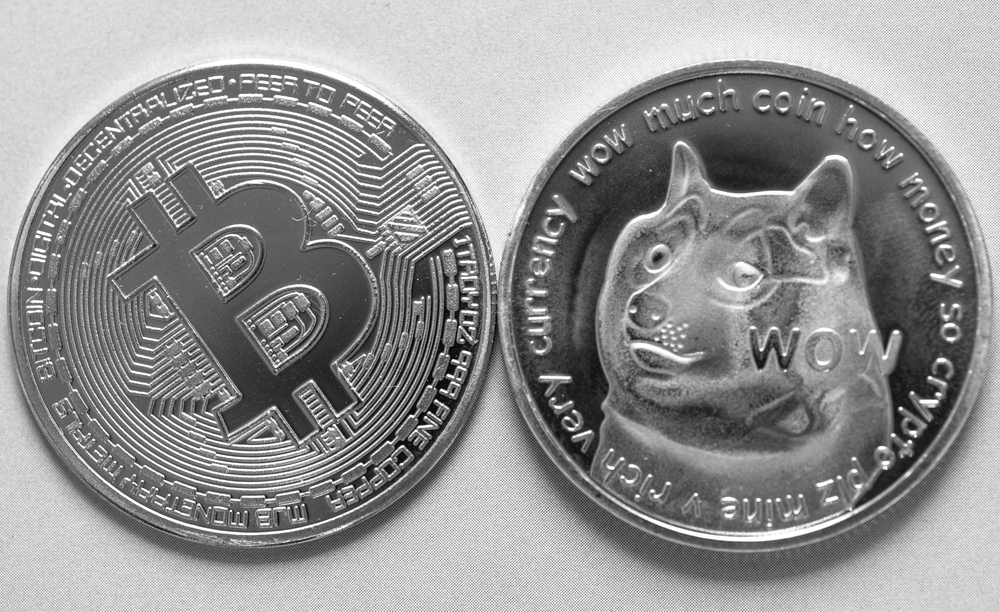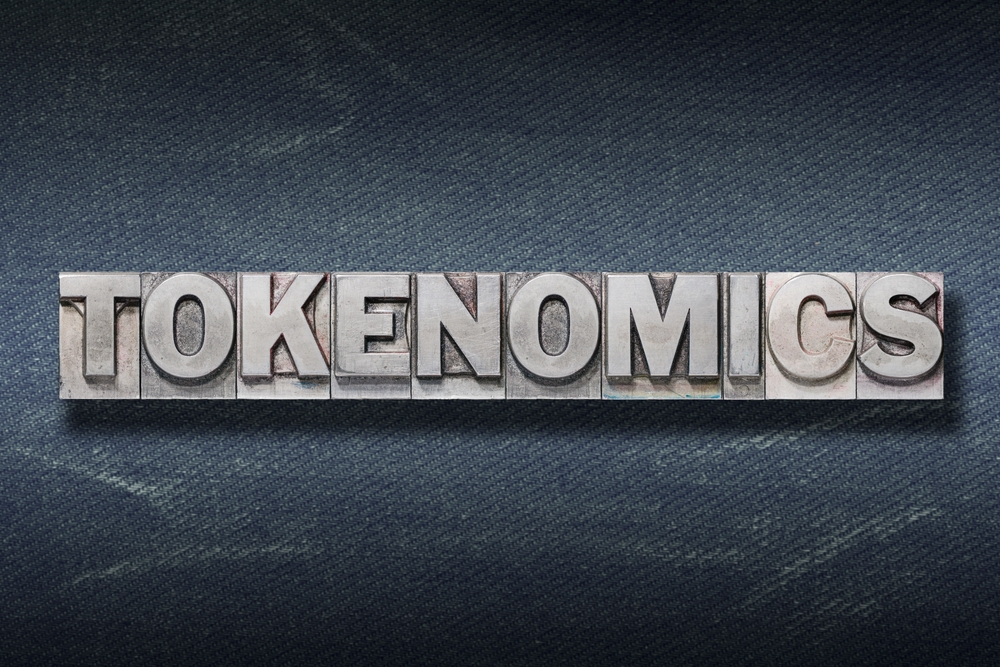Decoding Tokenomics: Understanding the Economics of a Token

Navigating the complex world of cryptocurrency trading and investing can often feel like trying to solve a sophisticated riddle, where every decision carries significant weight and the fear of missing out looms large. It’s the subtle yet powerful mechanics of tokenomics that casts a defining impact on the growth trajectory of digital currencies—one that can determine whether you’re placing savvy bets or just gambling away your hard-earned money. With a keen eye for deciphering these economic underpinnings, I’m here to simplify the intricacies that drive the market dynamics of your favored cryptocurrencies. In this post, you’ll find the key to understanding supply and demand, how value is cultivated, and what ensures the longevity of a digital asset. Prepare to transform the way you assess potential investment opportunities in this fast-paced digital realm, and align your strategy with robust tokenomic foundations. The secrets of the crypto economy await, offering you the clarity needed to uncover the most promising prospects in the digital currency landscape.
The Maze of Token Economics

Understanding tokenomics can be challenging, with elements like supply, distribution, utility, security, and value creation at play. But don’t worry, we’ve got your back!
Your Guiding Light To Tokenomics
In this article, we will simplify the fundamentals of tokenomics, helping you to make informed decisions in your crypto investments.
Why do some digital currencies soar to astronomical values while others fade into obscurity? What makes a cryptocurrency a worthy investment or a potential flop? It boils down to a critical concept that often flies under the radar: tokenomics. But what exactly is tokenomics, and how can you harness its power to make smarter investment choices?
Tokenomics—a term that combines ‘token’ and ‘economics’— refers to the factors that influence a cryptocurrency’s value and longevity. Think of it as the DNA of a cryptocurrency; it’s a blueprint that outlines how it functions within the larger crypto economy. From Bitcoin’s capped supply to Ethereum’s gas fees, each digital coin has its unique tokenomic structure that can make or break its success.
- Supply Mechanics: How is the total supply determined? Is it fixed, inflationary, or deflationary?
- Distribution Methods: How are the tokens allocated among founders, investors, and the community?
- Utility: Does the token serve a purpose other than being exchanged for goods and services?
- Security Measures: How are transactions validated, and how secure is the network against fraud?
- Value Proposition: What problem does this crypto solve and how does it aim to retain or increase its value over time?
Consider Bitcoin. Its allure among investors is largely due to its fixed supply of 21 million coins, making it a ‘deflationary’ cryptocurrency akin to digital gold. On the other hand, a ‘utility’ token like Ether empowers you to create and power through decentralized applications on the Ethereum network, giving it intrinsic value.
Real-world applications are also a cornerstone of tokenomics. For instance, Chainlink uses its LINK token to pay network operators for providing reliable data feeds, rewarding those who are making the ecosystem robust and trustworthy. This cycle of utility and reward is a hallmark of strong tokenomics in practice.
But this is just the tip of the iceberg. Each factor intertwines to form a complex economic tapestry that can be the difference between a flourishing, widely-adopted technological breakthrough, and a stagnating project.
So, are you ready to peel back the layers of your crypto investments? Stay tuned as we delve deeper into the nitty-gritty of tokenomics. Next up, we’ll explore the basic principles of tokenomics and why they are exceedingly significant in shaping your investment outcomes. Are your investments aligned with strong tokenomic principles? Let’s uncover that together.
Understanding Tokenomics: The Basics

Imagine the excitement of uncovering a treasure map where every symbol, every line hints at where to dig for gold. That’s tokenomics in the crypto world. But what is tokenomics, and why does it cause such a buzz among investors and traders alike? Let’s unlock its essence.
Definition of Tokenomics
‘Tokenomics’ blends the words ‘token’ and ‘economics,’ reflecting how these digital assets are molded by various economic factors. It’s the framework that influences a cryptocurrency’s supply and demand, its distribution, and ultimately, its value. Think of it as the DNA of a token – it contains all the genetic information that determines how a token functions within the ecosystem.
- Supply Cap: Ever heard of Bitcoin’s 21 million coin limit? That’s its supply cap – how many coins exist.
- Utility: What can you really do with a token? Does it give you governance powers, or can you use it in a specific app?
- Distribution: How are these tokens spread among investors, founders, and the community? Think fair share.
Why Tokenomics Matter
Your hard-earned money is on the line when you invest. Tokenomics can make or break a crypto project, much like a heartbeat sustains life. It’s the undercurrent that can either send a token’s value soaring or plummeting.
“Money is a tool of exchange, which can’t exist unless there are goods produced and men able to produce them.” – Ayn Rand
The better you grasp a token’s tokenomics, the clearer you see its potential to thrive or dive.
By understanding tokenomics, you’re peering under the hood, checking the engine of your potential investment car. Is it a smooth, efficient machine, or are you looking at an old clunker about to break down?
But it’s not just about the nuts and bolts of a token’s economy. It’s about the story they tell of the digital world’s evolution. Remember the initial coin offering (ICO) craze? Those projects with sound tokenomics survived the hype and are thriving today.
So, as you gaze upon the vast, star-studded crypto universe, ask yourself: Do you know the tale of your chosen token? If not, stay tuned. We’ll delve right into whitepapers next – your map to the stars.
Think of the smart contracts behind Ethereum or the deflationary nature of Binance Coin—real examples of how tokenomics shape market perception and user behavior. Can you start to see the bigger picture?
And now, with the basics of tokenomics decoded, are you ready to take a closer look into the tools for analyzing these intricate economic frameworks? Stay with me as we pivot our lens towards the critical resource in any investor’s arsenal – the project whitepapers. Are you set to unravel the layers of information they hold?
Analyzing Tokenomics: Tools and Techniques

Have you ever paused to consider what makes one cryptocurrency project succeed where another stumbles? Beyond the buzz and the hype, there’s a solid foundation that often dictates these outcomes – it’s called tokenomics. And to truly get a feel for the potential success of a crypto venture, you’ll want to have the right tools and techniques at your disposal to dissect and understand its tokenomics thoroughly. But where do you start?
Delving into Whitepapers
Picture this: You’re exploring a new crypto project, and you land on a document that could hold the keys to the kingdom – the whitepaper. This is not just another item to skim through; it’s the blueprint of the project’s economic model. It reveals intentions, mechanics, and the envisioned trajectory of the token in play.
Here’s how you can extract the gold from these whitepapers:
- Supply and Demand: Look for clarity on token supply — is it fixed, or can it change? What mechanisms are in place to handle that supply, such as burning tokens or implementing buyback schemes?
- Distribution: Find out how tokens will be distributed. Is there a fair launch, or do insiders hold significant amounts of the tokens? How are they incentivizing the user base?
- Utility: Assess the token’s purpose. Will it be used for governance, staking, or perhaps as a means of payment within its ecosystem?
- Security: Dig into steps the creators are taking to secure the token against potential attacks or manipulations.
Take, for example, the famous case of Bitcoin’s whitepaper; it set a precedent for transparency and laid the groundwork for what has become the bedrock of crypto value exchange today.
“In the absence of the sacred, nothing is sacred – everything is for sale.” – Oren Lyons
Just as Lyons implies the sacredness of value in traditional terms, so does tokenomics establish that sacredness within the crypto realm. The heart of a project’s value isn’t in the buzz it generates but in the concrete economic policies it holds dear, as presented in its whitepaper.
Still on the fence about how valuable whitepapers can be? Let’s take a trip down memory lane to when Ethereum’s whitepaper laid out a clear vision of a decentralized platform for smart contracts, changing the game entirely. A clear and compelling whitepaper often paves the way for a successful tokenomics model, which ultimately translates to potential success in the marketplace.
As you start to sift through whitepapers, remember that they are not just technical documents but narratives. They weave the story of the token’s proposed life cycle, its intended uses, and how it is projected to fit within the burgeoning digital economy. Can a whitepaper alone decide the fate of a token? Not in its entirety, but it sure holds a vital piece of that destiny.
The power of a diligent whitepaper review cannot be overstated. Ask yourself: Do I fully grasp the economic underpinnings detailed here? The whitepapers that win you over should be the ones where you can see the path from inception to integration – a journey that, if well-founded, can be thrilling and profitable.
And it doesn’t stop here. Once you’ve peered into the depths of these foundational documents, where might your journey into tokenomics take you next? What are the broader economic forces at play, and how do they shape the destiny of tokens?
Stay tuned as we stretch beyond the written promises of whitepapers and delve deeper into the fascinating interplay of economic models—where we’ll see how elements like inflation and deflation play tag with the circulating supply of tokens, beckoning the alluring tide of market liquidity. Curious?
Inflationary vs. Deflationary Tokens: The Showdown

How do inflationary and deflationary models impact tokenomics, and why should investors care? It’s a crucial debate that could determine the long-term viability and success of a cryptocurrency. Let’s shed some light on this epic economic battle.
Unpacking the Models
Think of inflationary and deflationary tokens as the Yin and Yang of the crypto economy. They’re the opposing forces that breathe life into a token’s existence, each with its unique approach to handling supply.
- Inflationary tokens are like a currency with a never-ending print button—more tokens can be created over time, potentially diluting the value of each token. This model is similar to fiat currencies, where governments control money supply.
- Deflationary tokens, on the other hand, come with a finite supply or mechanisms such as token burns, to reduce the total supply over time, theoretically increasing the value of remaining tokens.
For instance, look at Bitcoin’s capped supply of 21 million coins, a deflationary model designed to mimic the scarcity and value preservation similar to gold. Contrast that with a cryptocurrency like Dogecoin, which started as inflationary with no cap on the total supply, reflecting a different philosophy.
The Impact on Market Liquidity
How do these models affect market liquidity, issuing of tokens, and the overall market dynamics? This is where the plot thickens.
- Inflationary tokens can lead to reduced buying power over time, but they maintain market liquidity by ensuring there’s always enough of the currency to go around.
- Deflationary tokens may become more valuable on a per-token basis, but as the supply decreases, it can lead to liquidity issues, making it harder for users to buy, sell, or use the token.
Liquidity and scarcity can push the scales of value in different directions. For example, the “halving” events in Bitcoin’s history, which decrease the reward for mining new blocks and effectively the new supply of bitcoins, have historically preceded significant price increases as the scarcity effect takes hold.
“The future of money is digital currency.” – Bill Gates
This quote hits home the essence of cryptocurrency, highlighting the importance of understanding the tokenomics behind these digital assets. The very battle between inflationary and deflationary models is what could shape the future Bill Gates envisions.
Now, as we have peeled back the layers of inflationary and deflationary tokens and their impact on liquidity and market dynamics, are you wondering how these economic models can influence your investment strategy? Stay tuned, as our journey into tokenomics is about to get even more interesting.
Are you ready to decode the next piece of the tokenomics puzzle and see how it fits into your crypto strategy? Curious to know what else there is beyond inflation and deflation? Let’s keep exploring in our next section…

Confused with some unfamiliar terms in the realm of cryptocurrency? It happens to the best of us. As we wade through the waters of tokenomics, let’s arm ourselves with a handy glossary to clear up any misunderstandings that obscure our path ahead.
Deciphering Crypto Lingo
Words are the keys that unlock the meaning of complex concepts. With tokenomics being a field rife with jargon, let’s straighten out a few terms:
- Circulating Supply – The total number of tokens actively available and being traded in the market. Unlike total supply, it excludes locked, reserved, or non-circulating tokens.
- Total Supply – The sum of all coins created, minus any that have been verifiably burned. It’s the full count of tokens in existence.
- Max Supply – The ceiling of token creation; the absolute cap on how many tokens will ever exist. This is critical for forecasting scarcity and value.
- Token Burn – A deflationary technique where tokens are permanently removed from circulation, usually to reduce supply and potentially increase demand.
- Staking – It’s like putting your coins to work for you. Invest your holdings to support a network’s operations and, in return, earn rewards, often as additional coins.
- Vesting Period – Time-bound handcuffs on certain tokens to prevent their immediate sale post-launch or distribution, aimed at ensuring long-term commitment from stakeholders.
Having a clear grasp of these terms will elevate your understanding of blockchain projects and their underlying economies. For instance, knowing that a project plans to periodically ‘burn’ a portion of its tokens might signal a deflationary mechanism at play, which could affect the token’s perceived rarity and long-term value.
Think about the feeling of holding not just a digital token but an exclusive collectable whose very essence is etched in its rarified supply. That’s the kind of emotional tether good tokenomics can create between a crypto asset and its holder.
“In the cryptosphere, words are the roots of wealth – understand them, and you unlock treasures beyond mere currency.”
Armed with such knowledge, aren’t you becoming more curious about how these elements weave together in the broader context? How do they shape the resources that enlighten your journey through crypto investments?
Brace yourself for the ride ahead, as we will soon take a look at the proven resources that can turn these newfound definitions into powerful tools for your investment strategy. Are you ready to explore how deep the rabbit hole goes and discover resources that illuminate the intricate dance of supply and demand in crypto? Stay tuned, for that’s exactly where we’re heading next.
Resources that Shed Light on Tokenomics

Ready to turn the page and explore the deeper layers of tokenomics on your own? Knowledge is power, especially when navigating the undulating terrain of cryptocurrency. To nudge you towards becoming a savvy investor, I’ve curated a selection of resources that’ll give you the upper hand.
Your Reading List
Ever stumbled across an article so insightful that it felt like finding a map to a hidden treasure? That’s the kind of “Aha!” moment you can expect from the reading list I’m about to share.
First on the docket, Coinmonks’ piece on Medium cuts through the jargon and presents the ABCs of tokenomics with precision. It’s a fantastic starting point for newcomers eager to understand how token economics propel the blockchain and cryptocurrencies forward.
Next, for those who lean towards professional insights, Artem Gordadze’s LinkedIn article on Decoding Tokenomics Fundamentals is the perfect fit. It offers a clear breakdown of the critical elements that contribute to a cryptocurrency’s potential for success. With real-world examples and an analytical lens, this resource offers an invigorating glimpse into the strategic side of tokenomics.
Finally, if you’re after an in-depth exploration, DSPYT’s content piece on Unraveling Tokenomics is an enlightening read. The author peels back layer after layer of complexity to reveal the underlying mechanisms of token economies. It sheds light on studies that highlight the significance of strategic token distribution and utility in propelling a project’s growth.
These resources, each in its own way, illuminate the path through the intricacies of tokenomics. They give you the what, why, and how – serving as guides in your journey to cryptocurrency mastery.
Curious how all these moving parts of tokenomics play out in the real investment scene or how you can apply these insights to make informed decisions? As we head towards our concluding section, I promise to tie these concepts back into the tangible world of crypto economy. Keep reading to seize the knowledge that will equip you on this electrifying venture – where your next ‘Eureka!’ moment waits right around the corner.
Wrapping it Up

So here we are, rounding off our journey through the intricate world of tokenomics. I hope this series has shed a bright light on what can sometimes feel like a meandering path through the economic mechanisms of cryptocurrencies. The aim? To empower your investment strategies with a robust understanding of what exactly makes your digital coins tick.
The Takeaway
Imagine tokenomics as a treasure map, guiding us to uncover the hidden gems within the crypto economy. In essence, this map leads us through supply mechanisms, utilization, security aspects, and all the factors that breathe life and value into digital currencies. Grasping these concepts is not just beneficial – it’s critical, because these are the forces that sculpt and sway the market worth of your investments.
Parting Thoughts
Tokenomics should never intimidate us; it’s just the pulse of the crypto universe. And understanding this pulse is like knowing the beat of your favorite song. With clarity on these economic principles, the fog around your crypto decisions starts to lift. You’ll navigate the market waves with greater confidence, and spot the potential in coins that others might miss amidst the cacophony of market hype.
Until Next Time
Remember that the crypto landscape is alive and perpetually evolving. As it does, I’ll be right there with you, bringing you the latest developments and knowledge to light your path forward. Keep investing wisely, stay curious, and stay tuned for more insights that will help you in crafting your crypto saga. Until next time, happy investing!
